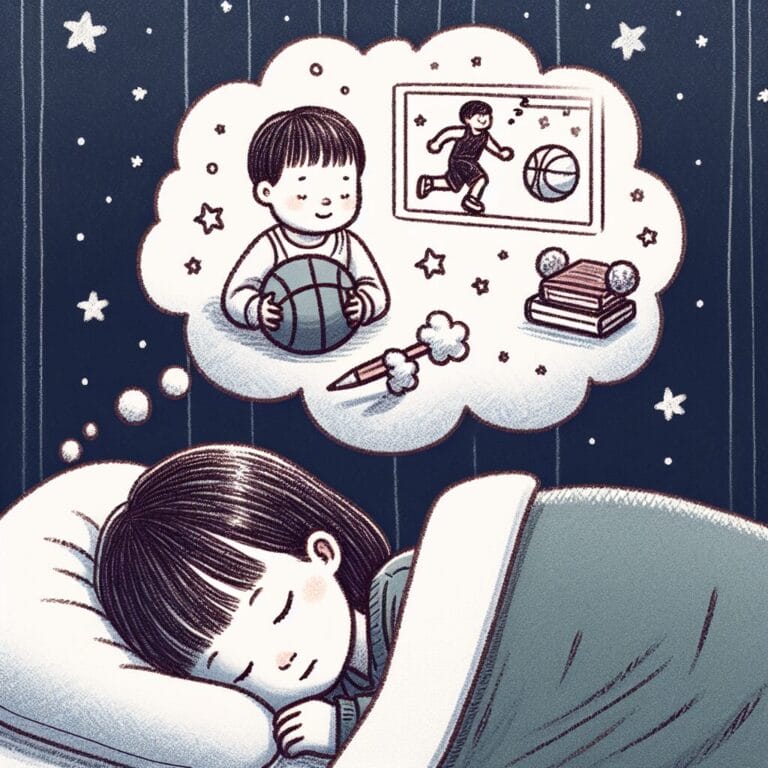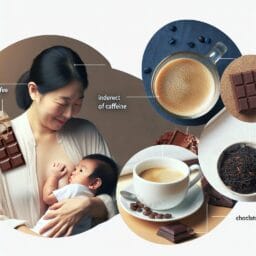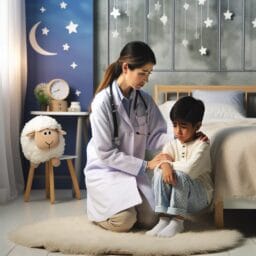
Promoting Restful Sleep: Effective Tips for Reducing Caffeine Intake in School-Age Children
Table of Contents
- Introduction
- Understanding Caffeine
- Assessing Caffeine Intake
- Strategies for Reducing Caffeine Intake
- Implementing a Gradual Reduction Plan
- The Role of Parents and Caregivers
- Conclusion
- Frequently Asked Questions
Introduction
Did you know that our tiny tots and cool school-aged kiddos might be buzzing with more than just boundless energy? Yup, it turns out caffeine can sneak into their systems through some of their favorite treats like chocolate milk or that soda at the birthday bash. And here’s the scoop: even a teeny bit of caffeine can make it super tough for our little ones to catch those ZZZs they need so much.
Let’s talk sleep! When kids get enough dreamy sleep time, their brains and bodies grow like superhero strong! But when caffeine is hopping around in their systems, it can make them toss and turn all night. Imagine trying to fall asleep when your body feels like jumping on a trampoline – no fun, right? That’s why keeping an eye on what munchkins munch and sip can lead to sweeter dreams.
Now, not all heroes wear capes; some carry lunchboxes! Parents and teachers have this epic quest to steer clear of serving sips and snacks that could mess with bedtime routines. Steering away from energy drinks is a biggie because they’re loaded with caffeine—like a space rocket full of fuel when we really need the parking brakes on!
And here’s something super interesting – every kid zaps caffeine differently. It’s all about genetic variation which means while one child may seem fine after a chocolate bar, another might end up bouncing off walls way past bedtime.
So what can our guardian grown-ups do? Keep those eyes peeled for hidden caffeine culprits and swap them out with sleep-friendly alternatives. Maybe choose water or 100% juice instead of soda pop. Or pick snacks that are just as yummy but without the wide-awake ingredient – caffeine.
By cutting back on daily caffeine dose, our youngsters might find staying asleep easier and waking up ready to conquer the world (or at least the playground). So let’s help them out by being secret agents in disease prevention – watching over their precious sleep quality like guardians of the galaxy of good health!

Understanding Caffeine
Hey there, super parents and amazing teachers! Picture this: caffeine is like this invisible ninja sneaking into our kids’ snacks and drinks. It’s not just lurking in the obvious suspects like cola and chocolate but can hide out in some surprising spots, too. Did you know that even flavored yogurts or iced teas might be secret agents of wakefulness? Yep, they could be quietly disrupting your school-aged child’s sleep quality without you even noticing!
Now let’s get down to the nitty-gritty on how caffeine does its thing. When it zooms into a kiddo’s body, it buzzes around like a bee in a flower field, impacting their tiny engines in ways we sometimes can’t see right away. Caffeine metabolism varies from one young star to another due to genetic variation—meaning some can have trouble falling asleep after a small amount, while others seem to sail to dreamland unaffected.
But here’s the kicker – scientists tell us that higher caffeine intake is linked with all sorts of sleep fumbles for our little ones. Some may experience sleep disturbances where they wake up at night ready for adventure when they should be snoozing. Others might find their overall sleep duration takes a dip faster than a superhero dives off a building. And if there’s something we want less than villains taking over the world, it’s our precious ones getting hit by those pesky caffeine-associated sleep disturbances.
So what magical moves can we make? Sprinkle some wisdom dust by keeping energy drinks off-limits—they’re full of caffeine caffeine (yes, so much it needed saying twice!). Also, weave a peaceful bedtime routine as strong as spider silk – bathtime stories instead of screen time sagas are way better before lights out.
Remember folks; childhood is when foundations for future health are laid brick by brick. With stealthy changes and smart choices in controlling daily caffeine dose, we’re setting up disease control shields around our kiddos’ restful slumbers—because nothing beats seeing them wake up filled with morning sunshine smiles!
| Item | Description | Impact on Sleep | Suggestions |
|---|---|---|---|
| Caffeine Sources | Invisible ninja in snacks and drinks like cola, chocolate, flavored yogurts, and iced teas. | Varies by child; can disrupt sleep quality and cause disturbances. | Monitor and limit caffeine intake. |
| Metabolism | Genetic variation affects how caffeine is processed; impacts can be immediate or delayed. | Some children may have trouble falling asleep, others are unaffected. | Be aware of each child’s sensitivity to caffeine. |
| Sleep Disturbances | Higher caffeine intake can lead to waking up at night, decreased overall sleep duration. | Negative impact on sleep health, leading to adventurous awakenings at night. | Reduce caffeine, particularly close to bedtime. |
| Bedtime Routine | Energy drinks and screen time can be high in caffeine and stimulating activity. | Energy drinks and screens can interfere with the ability to fall asleep. | Encourage bathtime stories and peaceful bedtime routines. |
| Health Foundations | Childhood is critical for setting health patterns for the future. | Good sleep is foundational for overall health and well-being. | Make smart choices to control caffeine intake and promote restful sleep. |
Assessing Caffeine Intake
Ever play a game of detective in your own pantry? It’s time to put on your sleuthing hat, because when it comes to reducing our school-aged child’s caffeine intake, the first clue is hidden in the fine print. Yep, we’re talking about food labels – those tiny texts that hold big secrets about what’s really inside our kids’ snacks and sips. By learning how to spot words like “guarana” or “theobromine,” you’re one step closer to cracking the case on unexpected caffeine sources.
Now let’s crunch some numbers – did you know recent studies have been eye-opening with caffeine stats for kids? On average, older children could be guzzling down more than just their daily apple juice; they might also be sipping stealthy amounts of caffeine without even realizing it. This secret sipper can lead to all sorts of bedtime bummers like trouble staying asleep or waking up throughout the night, which isn’t exactly what dreams are made of.
But fear not! You don’t need a sleep medicine degree to help your child fall asleep faster and snooze sounder. Here’s a smart move: make their bedroom a caffeine-free fortress. That means checking every nook and cranny—from the obvious soda cans to those sneaky energy bars disguised as health foods. And who wouldn’t love upgrading their munchkin’s bedtime routine from chaotic to cozy? Replace stimulating screen time with calming storytime or soothing music that whispers “sweet dreams” instead of “just five more minutes.”
The mission is clear: Dodge those sneaky caffeine culprits together with your kiddo, and you’ll build an invisible shield promoting disease prevention while waving goodbye to any potential for sleep apnea or other nocturnal nuisances. With less caffeine consumed during the day, expect fewer mid-night wake-up calls and more golden slumbers – because everyone deserves peaceful zzz’s after a day of playground quests and math test triumphs!
Strategies for Reducing Caffeine Intake
Did you know that setting up a caffeine-free routine is like planting a garden of sweet dreams for your school-aged child? Just as sunflowers need the right mix of sunshine and water to bloom, our kiddos need a blend of healthy habits and zzz-catching environments to grow their best. Let’s dig into some fresh tips to create that sleep-friendly oasis every child deserves.
First off, think about transforming your child’s bedroom into a serene sanctuary where caffeine is as welcome as snow in summer. This means cozying up the place with soft blankets, dreamy nightlights, and maybe even a plushy or two for good measure. Consider adopting rituals like reading bedtime stories or having quiet chats about the day – it turns out these moments don’t just knit hearts closer but also cue those sleepy feels.
Now, while energy drinks and colas might be no-nos in the land of nod, fear not! There’s an entire rainbow of delectable drinks that keep caffeine at bay. How about sipping on homemade fruit infusions or chilled herbal teas that come in flavors like magical mint or wild berry wonderland? Or, boost the appeal of plain ol’ H20 by giving it a twist with slices of citrus or cucumber for that spa-like refreshment. These are not only fun to make together but also get those hydration levels soaring high without any pesky caffeine.
And hey, why not turn learning about caffeine effects into an adventure? Chat with older children about how different bodies can have unique reactions due to genetic variation – some might feel jittery after a soda pop while others don’t notice much. This isn’t just science talk; it’s empowering them with knowledge! Encourage them to listen to their own bodies and choose what helps them stay on top of their hero game – whether it’s scoring goals at soccer practice or acing that spelling bee.
As we help our little ones navigate through the seas of choices out there, let’s involve them in steering toward healthier shores. Make picking those caffeine-free options an exciting mission: perhaps charting out new drink discoveries on a colorful graph or rewarding weeks of conscious choices with special family activities.
In crafting this harmonious rhythm between daytime fun and nighttime calm, we’re doing more than chasing away monsters from under the bed; we’re building strong foundations for lifelong well-being. It’s all part of being proactive guardians in disease control and prevention – because when our kids fall asleep easily and enjoy uninterrupted slumber through the night, they wake ready to conquer classrooms and playgrounds alike!
Implementing a Gradual Reduction Plan
Buckle up, cool cats and kiddos! We’re diving into the wild world of caffeine consumption and how it can play hide-and-seek in our daily lives without any of us being the wiser. You might be sipping on this sneaky little number more often than you think, especially if fizzy drinks or chocolatey treats are your go-to goodies. But here’s a juicy piece of knowledge: by shaking up our habits just a bit, we can help our school-aged superstars glide into dreamland with ease.
So let’s map out our secret mission to cut back on caffeine intake. It’s like being a health detective—every clue leads us closer to that sweet slumber. Start with a food diary; for a whole week, jot down everything that passes your lips – yes, even those tiny treats! This log will shine a spotlight on hidden sources of the perk-me-up potion lurking in your eats and drinks.
Keep an eagle eye out for headaches or grumps as you lower the caffeine lever—it could be your body playing ping-pong while adjusting to less jitter juice. If you spy these signs, don’t fret; they’re just temporary blips on the sleep radar. Try soothing strategies like belly-deep breathing exercises or stretching like a cat to ease through this phase.
Remember, Rome wasn’t built in a day, and shifting away from caffeinated culprits takes patience too. Instead of an energy drink, why not stir up some fruity fizz? Mix sparkling water with fresh fruit juices for an epic drink that’ll have taste buds doing cartwheels without keeping eyes wide open at bedtime.
And let’s chat about school-aged munchkins’ bedrooms—their personal dens should be all about winding down without distractions buzzing around. Think cozy nooks filled with their favorite books, soft tunes whispering lullabies through the air, instead of screens flashing brighter than a fireworks show.
By now, we’ve spun quite an adventure tale about dodging those sleep-snatching culprits. With every step we take towards fewer daytime jolts from energy drinks and sugary bites loaded with caffeine caffeine (Yes! It deserves mentioning twice!), our mini-heroes are bound to enjoy longer stretches of zzzs each night. That means waking up fresh as daisies, ready to jump into days packed with playground challenges and classroom quests—and isn’t that what growing up hearty and healthy is all about? So let’s make reducing caffeine consumption as fun as building Lego castles and baking mud pies because when sleep quality reigns supreme, everyone gets to wear shiny crowns of happiness!

The Role of Parents and Caregivers
Picture the hustle and bustle of a school cafeteria – amidst the clatter of trays and chatter of excited tales, slips in an often overlooked villain in our story of restful slumber: caffeine. While we’ve chatted about stealthy culprits hidden in foods and fizzy drinks, there’s another chapter to this sleep saga that begins with role models at home. That’s right, superheroes come in all forms, including parents and caregivers who can wield great influence by modeling caffeine-savvy behaviors. Kids are eagle-eyed observers; when they see their biggest heroes opting for herbal teas instead of reaching for that afternoon espresso, they’re more likely to mimic these wise choices.
Effective communication is also key to ensuring that our kiddos not only follow the path toward reduced caffeine intake but understand why it’s important. It’s about transforming ‘don’ts’ into ‘do-we-really-need-this?’, guiding them through thoughtful choices rather than setting strict rules. Nurture their curiosity by discussing how caffeine metabolism might affect their ability to stay asleep or fall asleep easier after busy days filled with math puzzles and tag games.
And here’s where teamwork makes the dream work – uniting forces with schools, healthcare providers, and other caregivers ensures a consistent message resonates throughout a child’s day. Perhaps propose a school-wide “Hydration Education” week that spotlights water as the ultimate power drink! Or maybe partner with pediatricians who can share tips about sleep medicine and disease prevention during well-child visits.
Remember, reducing caffeine intake isn’t just about saying no to certain drinks; it’s about fostering environments and routines conducive to sleep quality. A school-aged child’s bedroom should be a haven of calmness, where bedtime rituals cuddle them into nights free from trouble sleeping or experiencing sleep disturbances due to higher caffeine intake earlier in the day.
In crafting this harmonious rhythm between daytime activities and nighttime rest, we aren’t just tucking away troubles like sleep apnea or caffeine-associated sleep disturbances under the bed; we’re laying down bricks on the pathway to vibrant health. With every sip of water cheered on by peers and each energy drink swapped out for smile-inducing alternatives at home, our little champions are better equipped to conquer their worlds – one well-rested morning at a time!
Conclusion
Although we’ve danced around the topic of caffeine intake in our energetic school-aged kiddos, there’s an electrifying piece of the puzzle that’s been waiting in the wings. Did you know that while we’re busy making sure they scoot up to dreamland on time, their very own bedrooms could be secret sleep bandits if not set up just right? Yup, creating a sleep sanctuary is as crucial as brushing out the day’s tangles before bedtime.
Now let’s sprinkle a pinch of magic into this tale: imagine transforming your little one’s room into a starry-night haven where sleep duration isn’t haunted by hidden caffeine from sneaky snacks. A goodnight kiss paired with a calming lavender scent can work wonders in signaling those tiny brains that it’s time to wind down. And how about setting sail on nightly adventures through storybooks rather than screen-time escapades? These peaceful practices nudge them gently towards a land where falling asleep is as easy as floating on clouds.
Engaging older children in conversations about their body’s unique response to caffeine—thanks to genetic variation—can encourage choices that help them experience sleep without disturbances. It might feel like assembling a superhero squad when you collaborate with other parents or caregivers, sharing strategies and successes, ensuring disease control stays on everyone’s agenda.
So, let’s drumroll this home! By weaving together playful creativity and wise decisions like opting for caffeine-free drinks over energy-packed potions, we champion disease prevention with every cup swapped. A restful night cradles more than just dreams; it holds the key to future health victories for our sprouting youths.
As these brave little navigators journey through each bustling day armed with knowledge and healthy habits instilled by vigilant grown-ups, they’re not only sidestepping caffeine monsters but are also laying strong foundations for invincible immune systems and minds sharp as their favorite crayons. Here’s to sweet slumbers and even sweeter awakenings!



